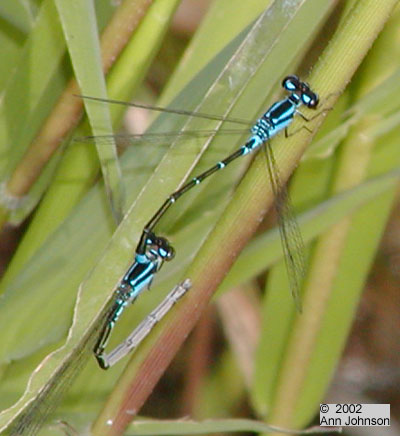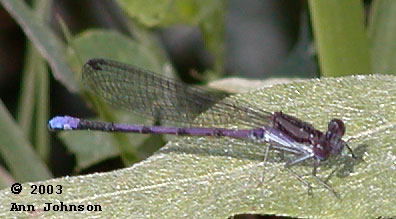- Pond Damselflies
- Coenagrionidae Family
The Pond Damselfly (Coenagrionidae) family encompasses most of the common damselflies seen at ponds and other still waters. However, some species, particularly Dancers, prefer a stream habitat. Coenagrionidae tend to be smaller, shorter-legged and often more brightly colored than other damselflies. Some present a real challenge for field identification because they demonstrate color changes with age, and/or two or three color forms of females. They have a short, diamond-shaped stigma. Six genera of Pond Damsels are found in Nebraska: Amphiagrion, Argia, Coenagrion, Enallagma, Ischnura, Nehalennia.

Skimming Bluet male and female
Most Dancers (genus Argia) prefer a flowing water habitat. They have long bristles on the legs, each bristle twice as long as the distance between the bases of the bristles. The Bluets (genus Enallagma) form our largest group of damselflies. Most male Bluets are primarily blue, although some are red, orange or yellow. Females vary in color, some having 2 or 3 color forms. Forktails (genus Ischnura) are some of our smallest damsels. The males usually have a mostly green thorax and a forked projection on the tip of the abdomen.

Variable Dancer